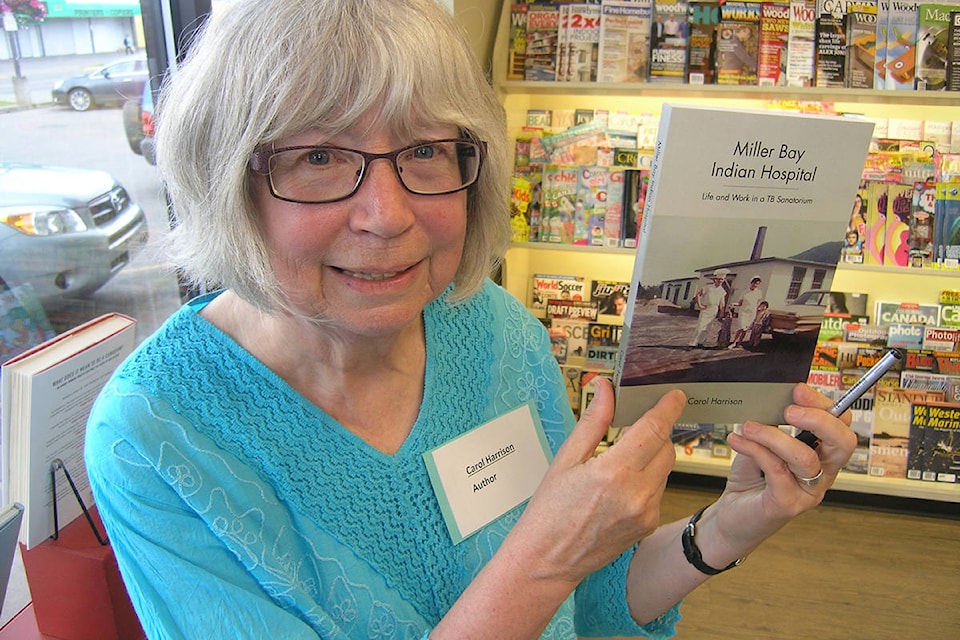BLOCKED off to vehicle traffic and relatively hard to spot, a road located between Port Edward and Prince Rupert leads to a relatively unknown portion of northwest health care history.
Popularly called the Miller Bay Indian Hospital, the facility once contained 180 beds and was the home, sometimes for years, of northwestern aboriginal people suffering from tuberculosis, a once prevalent infectious disease that generally affects the lungs.
It’s now the subject of a book published this year by retired Terrace nurse Carol Harrison.
She began coming across references and information about Miller Bay when writing a first book on public health history.
“I didn’t intend to write another book but became quite fascinated. It just sort of took my imagination,” said Harrison.
Her quest for information took her to the national archives and soon she was in contact with northwestern aboriginal people who were familiar with Miller Bay through having relatives stay there.
Built late in the Second World War, the facility was never used for its first intended client, the Royal Canadian Air Force.
So it was converted into a TB hospital in 1946 for aboriginal people as far east as Vanderhoof.
“Some people spent years there. Some spent their entire childhood there,” said Harrison of the hospital’s patients.
In addition to the wards, the grounds contained residences for its employees and their families - the book’s cover is that of a photograph of Terrace residents Cliff and Marge Slater.
He was a cook and she was a practical nurse who met and were married while working at Miller Bay.
Harrison is careful to point out that her book is not meant to be a critique of health care policy and the provision of services to aboriginal and non-aboriginal people.
“I’m not saying it was a good thing. This is just the historical picture,” she said.
Still, for patients who lived far away, Miller Bay would have been an isolated place to live at a time when transportation links weren’t what they are today, Harrison notes.
The facility closed in 1971 as the number of people suffering from TB declined thanks to vaccinations.
In its latter years it was also used as an extended care facility as one way of filling its beds.
One reference Harrison found had officials “scraping the bottom of the tuberculosis barrel” in order to find enough patients for the facility.
There’s little left of the actual facility itself, save for the smokestack from its power house and building foundations.
“Miller Bay Indian Hospital. Life and Work in a TB Sanitorium” is available locally at Misty River Books.
